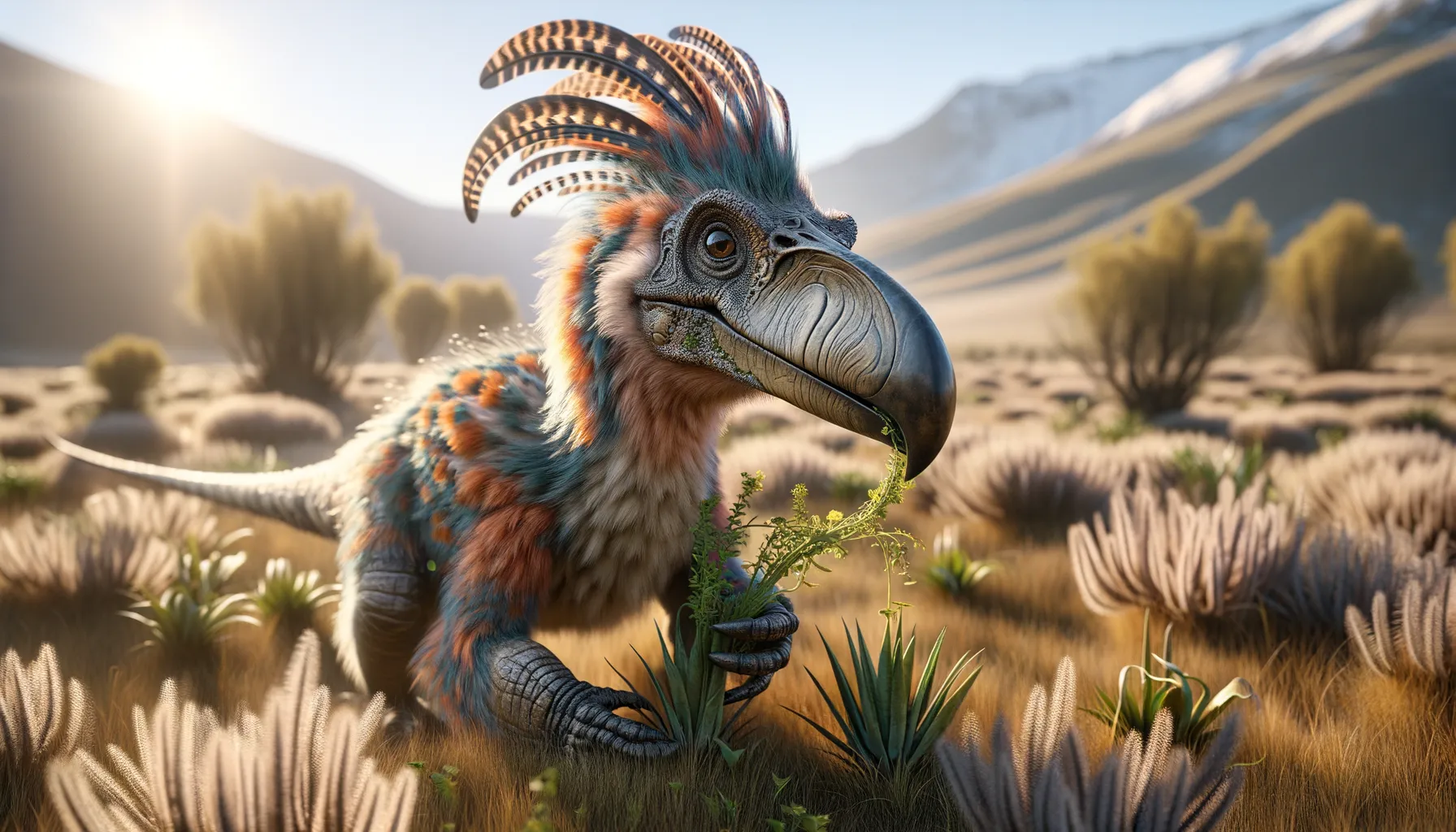
Magnirostris
The small dinosaur with a big beak.
Period
Cretaceous
Length
Approximately 1.5 meters long.
Height
About 1 meter tall.
Weight
Around 40 kilograms.
Magnirostris was a small ceratopsian dinosaur known for its large, parrot-like beak. It hailed from the Late Cretaceous period and was native to what is now Mongolia. This dinosaur is often recognized for its distinctive frill and facial features that made it an intriguing subject for paleontologists. As a herbivore, it likely fed on low-lying plants. Its discovery helped scientists understand more about the diversity and spread of ceratopsians in Asia.
Diet
Magnirostris was herbivorous, feeding mostly on low-lying plants. Its strong beak was well-adapted to cropping leaves and twigs. It likely consumed a variety of vegetation available in its environment.
Hunting
As a herbivore, Magnirostris did not hunt. Instead, it likely spent its time foraging for plant material. Its diet would lack the challenge of hunting and instead rely on finding plentiful vegetation.
Environmental challenges
Magnirostris lived in a world filled with larger predatory dinosaurs. Its small size made it vulnerable to attacks, requiring strategies to evade predators. The changing climate of the Late Cretaceous also posed challenges in terms of food availability. Rapid environmental shifts could have impacted its habitat and migratory patterns.
Speed
Slow moving, suited for grazing.
Lifespan
Could live for several decades.
First discovery
Discovered in Mongolia in 2001.
Fun Facts
- Magnirostris is a dinosaur that lived during the Late Cretaceous period, about 85 million years ago.
- The name 'Magnirostris' means 'large beak', which it had on its parrot-like face.
- It was a ceratopsian dinosaur, related to other horned dinosaurs like Triceratops, although it barely had any horns.
- Magnirostris was a herbivore, meaning it only ate plants, using its beak to chop them up.
- This dinosaur was relatively small, reaching about 1 meter (3 feet) in length, similar in size to a large dog.
- Fossils of Magnirostris have been found in what is now Inner Mongolia, China.
- Despite its intimidating name, Magnirostris was likely a gentle creature, focused on eating leafy plants and avoiding larger predators.
Growth and Development
Magnirostris would have hatched from eggs, growing steadily as it fed on plant material. Juveniles likely relied on staying close to adults for protection. As it grew, its distinct facial features and beak became more pronounced, aiding in food consumption. Its growth trajectory would be determined by its diet and environmental conditions.
Habitat
This dinosaur inhabited regions with abundant vegetation, suitable for its herbivorous diet. Plains and forested areas provided food and shelter from predators. Magnirostris likely favored environments where it could freely roam and graze. Its habitat would have supported other ceratopsian groups, indicating a rich, biodiverse ecosystem.
Interaction with other species
Magnirostris shared its environment with other small to medium-sized herbivores. It may have formed mixed herds for better protection against predators. Its presence in a diverse ecosystem meant interactions with both friendly and competitive species. Competition for food could have existed, but there would also have been cooperation in evading larger predators.
Natural lifespan
Magnirostris could naturally live up to several decades.
Reproduction
Like most dinosaurs, Magnirostris reproduced by laying eggs. Nesting behavior would have been essential for protecting its vulnerable young. The clutch size and frequency would determine its reproductive success, with nest sites carefully chosen for safety.
Social behaviour
Magnirostris may have lived in loosely organized groups or herds. Social interactions within these groups helped in protection against predators. Communication could have been through vocalizations or displays facilitated by its facial structure.
Fossil locations
Fossils of Magnirostris have predominantly been found in Mongolia. These fossil sites have provided insights into its existence and behavior. The well-preserved remains have allowed scientists to study its unique anatomical features. Paleontological efforts continue to explore similar terrains for more finds.
